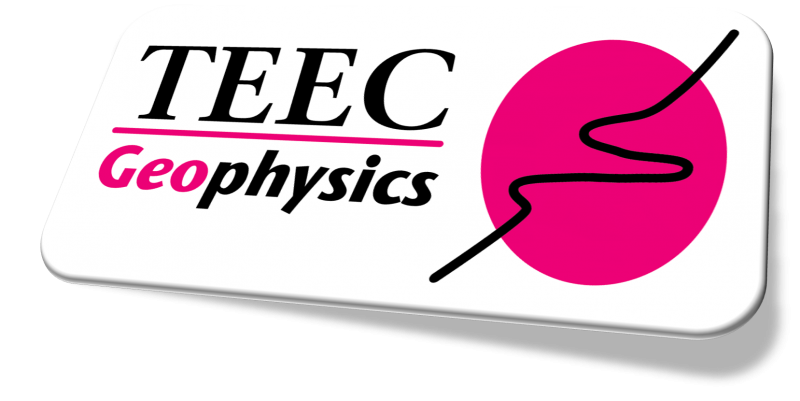Research Studies
TEEC is constantly involved in research of new technologies. Our vast experience and knowledge in the seismic service industry has taught us how to resolve complex problems. We’re working together with universities, ministries and industrial partners to continuously improve seismic technologies.
The current studies are:
FWIGREM
Simultaneous Inversion of Full Seismic Waveforms, Electromagnetics, and Gravity
Seismic waveform inversion (Full Waveform Inversion/FWI), gravity (GR), and electromagnetics (EM) inversion are combined in a Joint Inversion Framework by the project partners TERRASYS and TEEC. The combination of complementary multi-physical data in a common interpretation concept aims at consistent and reliable models of the physical parameters of velocity, conductivity and density, and of the structural geometry. The FWI module is adjusted by TEEC towards increased robustness by cycle-skipping mitigation, and towards increased resolution by anisotropy extensions.
CATRA
Software algorithms for seismoacoustic submarine cable detection
Seismoacoustic measurements are used to monitor the burial depth of submarine cables that collect electricity from offshore wind farms. In the CATRA (Cable Tracking) project, partners Emma Technologies and Geomar are developing a novel ship-towed seismic measurement system, while TEEC is providing adapted algorithms for depth estimation, applying both diffraction imaging techniques and artificial intelligence for seismic data analysis.
AID
Artificial Intelligence Denoising
Within the joined initiative „Artificial Intelligence Denoising – AID“ of TEEC and the University of Hamburg we will investigate new cascading neuronal network structures for the purpose of denoising. The project is funded by the German Ministry of Energy and Economic Affairs (BMWi). The project research and development will deliver a fundamental framework intended to be usable for general purpose big-data analysis in many fields in science and commerce. The aim is to provide new algorithm to enable and improve big-data analysis of imperfect data input. The example investigation will focus on seismic noise attenuation and signal enhancement for structural imaging and subsequent data classification. The clue will be the combination of different types of multi-layered and competing neuronal networks into new cascaded structures.
Gitaro.JIM
Geophysical Interpretation with Target-Oriented Joint Inversion Modules
The aim is to integrate multi-disciplinary geophysical data sets from controlled source electromagnetics (CSEM), seismic joint migration inversion (JMI) and CRS tomography, gravity and magnetics (G/M), and well data in a modular joint inversion approach. The complementary data reduces ambiguities of structural earth models while the modular scheme takes advantage of individual solutions in geophysical exploration and exploitation of conventional and unconventional submarine resources.
WAVE Project
The High-performance-Computing (HPC) Initiative of the Horizon 2020 strategy of the German Ministry of Research and Education (BMBF) is now funding the development of the „WAVE – HPC-Toolbox“. TEEC group will use the wavefield simulator of WAVE for the very computational expensive Full Waveform Inversion and Reverse Time Migration algorithm to enhance seismic imaging. The aim is to enhance scalability and usability of such applications on heterogeneous and high-performance cluster systems. The know-how transfer from participating HPC groups has great potential for savings in developing and maintaining HPC algorithm at TEEC group.
DIFFTOMO
Diffraction Tomography
A joined initiative of University of Hamburg and TEEC group will investigate the use of scattered seismic energy to determine seismic propagation velocities using a novel waveform tomography approach. The research funded by BMWI can open a new field of very cost-effective high-resolution seismic exploration, which could be utilized for shallow-marine targets of geomechanical and geological investigations, e.g. in cable/pipeline routing, windfarm planning and observation, as well as for classic offshore and onshore exploration.
SUGAR III
TEEC group is continuing the research in gas hydrate exploration.
The task of the German research cooperative SUGAR is the development of the technology for gas hydrate exploration and production. Within the framework of the third phase of this program TEEC group continues and extends its efforts to enhance the capabilities of high resolution seismic imaging and estimation of subsurface parameters. In collaboration with academic and industrial partners the use of seismic Full Waveform Inversion and multi-parameter inversion from seismic, electromagnetic and gravity field measurements shall sharpen the vision of the hydrate bearing sedimentary regime.
To visualize the small scale channel and levy systems with data from a sparse 3D seismic acquisition is a challenge. This new technology is aimed to sharpen the vision not only for gas hydrates, but also for seismic exploration in conventional and unconventional regimes.
Update:
The project is finished and a publication is in preparation.
